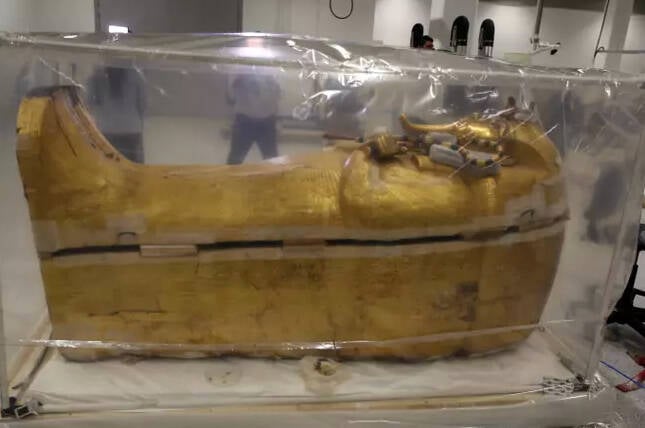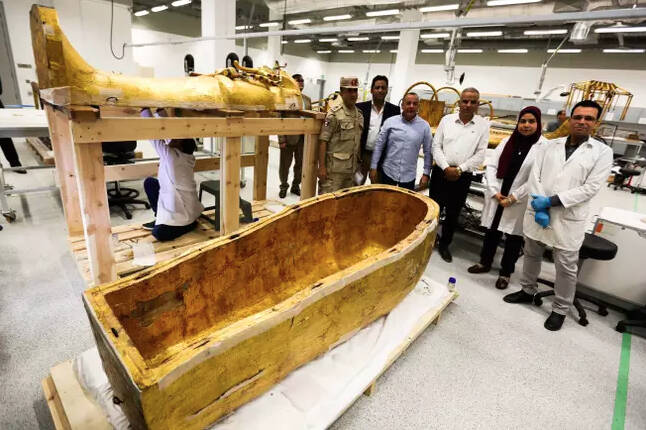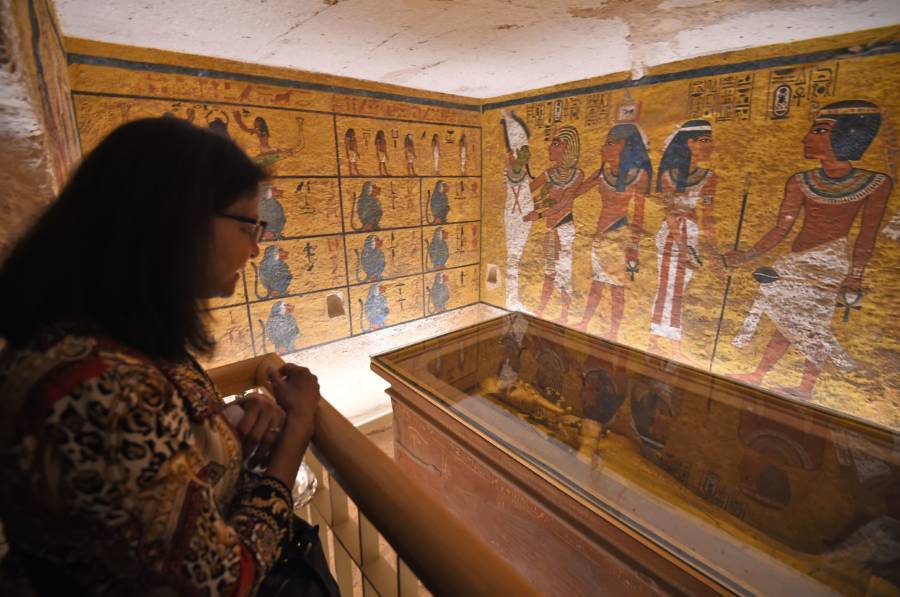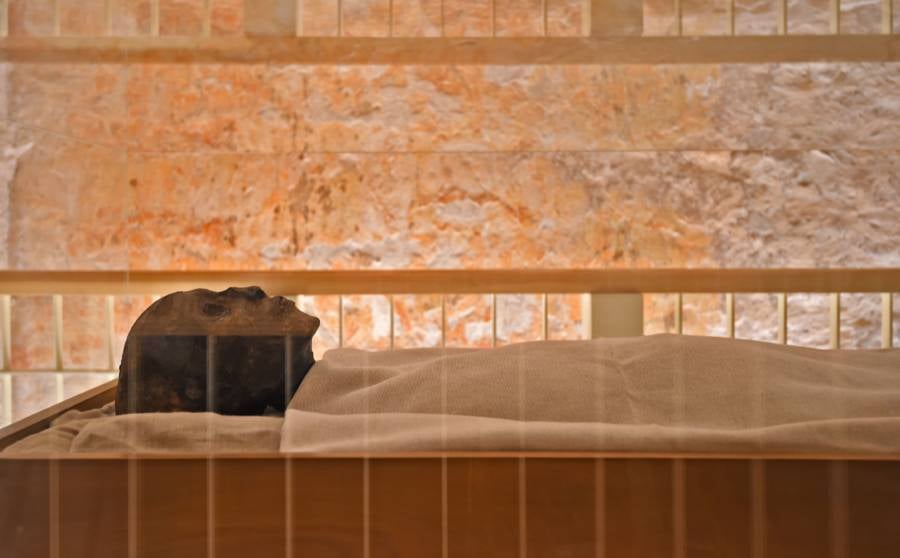"The coffin is in a very bad condition, very deteriorated. We found many cracks, we found many missing parts, missing layers."

PAKing Tutankhamun’s outer coffin is being restored for the Grand Egyptian Museum’s opening in late 2020.
The outermost coffin that once held the body of King Tutankhamun had never left the 3,300-year-old tomb since the time he was first laid to rest. Even after archaeologist Howard Carter discovered the tomb in 1922, the wooden coffin remained in the Valley of the Kings — until now.
Earlier this year, the Getty Conservation Institute and the Egyptian Ministry of Antiquities finished a nearly 10-year-long restoration of Tut’s tomb. Now, wrote The Los Angeles Times, they’ll restore his outer coffin, removing it from its resting place and allowing experts to finally get a good look.
The intricate project is largely motivated by the impending opening of the Grand Egyptian Museum in 2020, which will overlook the Pyramids of Giza.
The outermost coffin is the largest of three concentric coffins inside which King Tut’s mummy was found. While the inner two coffins have already been on display at the Egyptian Museum in Cairo, the third coffin will finally rejoin them for an exhibit at the new Grand Egyptian Museum when it opens.
In addition to the three coffins that house Tut’s body, this exhibit will also showcase the numerous relics discovered in his tomb. The innermost coffin is made of solid gold, while the outer two coffins are crafted in wood and covered in gold, along with several semiprecious stones.
Carter’s original discovery of Tut’s resting place in the Valley of the Kings was the first time that a royal tomb from the time of ancient Egypt had been discovered so remarkably intact. It contained a plethora of stunning royal treasures as well, such as a dagger made from meteorite.
Two of the three coffins were later transported to the Egyptian Museum in Cairo while the outer coffin was left in the king’s tomb. Only in July, 97 years later, was the casket removed under intense security in order for it to be fumigated for three weeks.
With careful yet thorough restoration now underway, experts have had the rare opportunity to inspect the outer coffin up close and reveal photos for all to see.

PARestoration of the outer coffin will take at least eight months, Antiquities Minister Khaled el-Anany said.
Given the damage to the coffin that experts have now seen, however, it will take about eight months to restore it. Eissa Zeidan, the general director of First Aid Conservation and Transportation of Artifacts, said the coffin is about “30 percent damaged” due to the heat and humidity inside the tomb.
“The coffin is in a very bad condition, very deteriorated,” said Zeidan. “We found many cracks, we found many missing parts, missing layers.”
Egypt’s Antiquities Minister Khaled el-Anany confirmed as much when he said the coffin was in a “very fragile” state, with repair work being top priority. The 7-foot, 3-inch-long coffin has been safely kept in one of the 17 laboratories within the new museum.
Restorers have been working on numerous items found in King Tut’s tomb, of which there are more than 5,000 — all of which will be showcased at the Grand Egyptian Museum. With more than 75,000 square feet of real estate, it’ll be the biggest museum on Earth exclusively dedicated to one civilization.

MOHAMED EL-SHAHED/AFP/Getty ImagesA woman looks at the golden sarcophagus belonging to Tut, who died at the age of 19.
Restoration of King Tut’s tomb came after years of tourists trudging through the majestic heritage site. Both the Getty Conservation Institute and Egypt’s Ministry of Antiquities committed to the extensive revamp nearly a decade ago and finally finished in January.
Their efforts included installing an air filtration and ventilation system to regulate the humidity, carbon dioxide, and dust levels inside. Lighting, as well as new platforms from which tourists can see the sarcophagus, were added too.

MOHAMED EL-SHAHED/AFP/Getty ImagesThe linen-wrapped mummy of King Tutankhamun, displayed in his climate-controlled glass case in the underground tomb KV62.
Of greatest concern were the strange brown spots on the tomb’s paintings, which suggested microbial growth in the room. These were found to have been mere discolorations due to fungus that had been there since the tomb’s discovery.
Thankfully, neither fungus nor anything else has taken down Tut’s tomb. Now, after a long period of restoration, it will live on for many more visitors to see. And after the most recent restoration of the outermost coffin, visitors will have the most complete picture yet of how the boy king was buried.
When work on the pharaoh’s gilded coffin concludes and the Grand Egyptian Museum officially opens, it will be the first time in history that King Tut’s three coffins will be on display together.
Next, read about Ankhesenamun, King Tut’s wife — and half-sister. Then, discover the most interesting facts about ancient Egypt.





